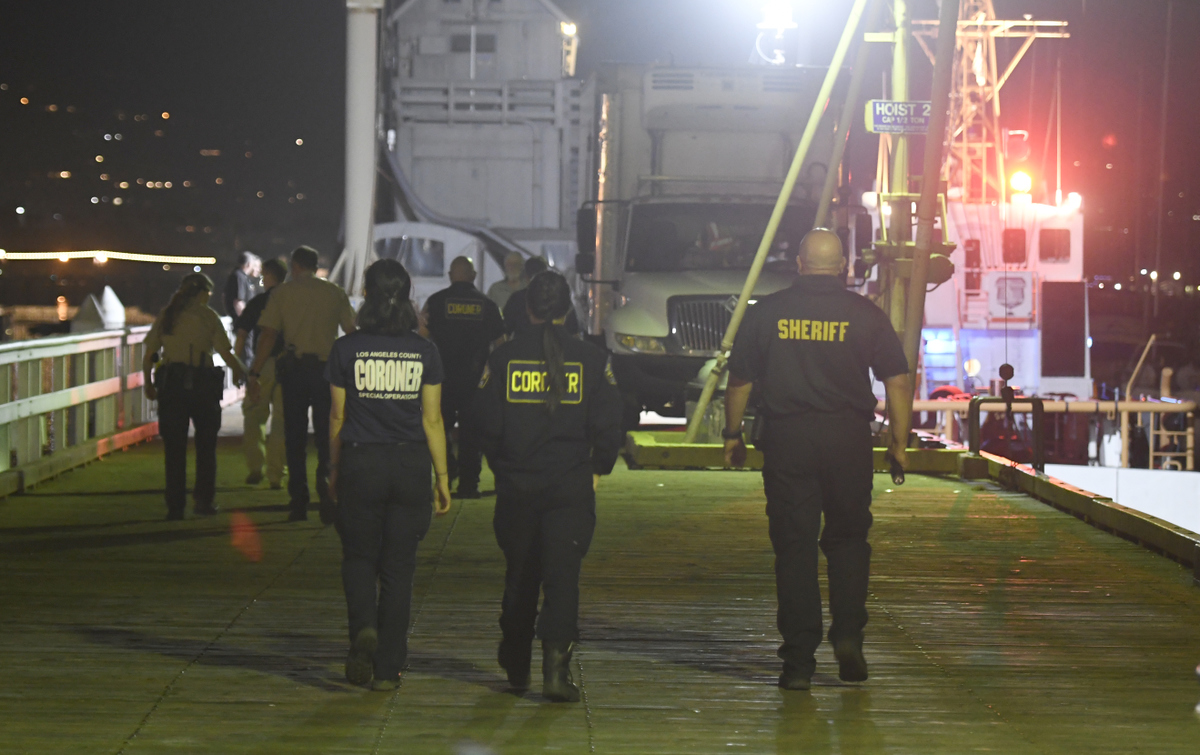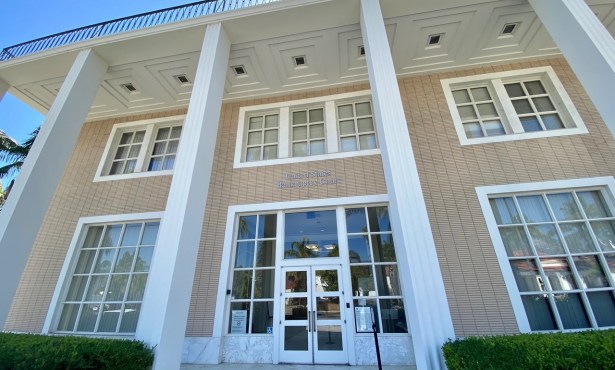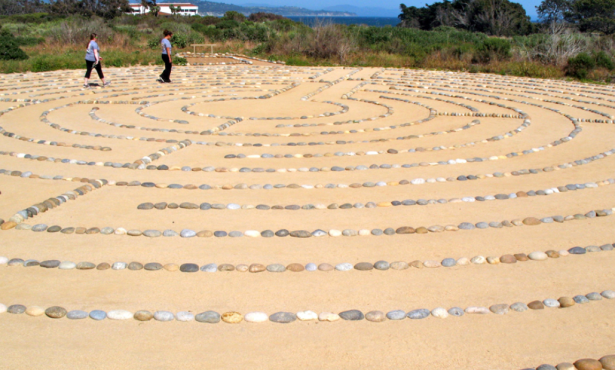Grim Conjecture in New ‘Conception’ Lawsuit Against Coast Guard
Families Fault Agency for Inadequate Inspections

In the hours following the Conception dive boat fire, Santa Barbara held its breath waiting to learn the fate of the 34 people who had bunked down for the night belowdecks on September 1, 2019, off Santa Cruz Island. It soon became clear that they’d all died horribly after a fierce fire broke out above their heads on the main deck, and it wasn’t until September 11 that the last body was recovered, that of Berenice Felipe, whose mother is among the family members of all the victims who have filed a new lawsuit against the U.S. Coast Guard.
According to the new lawsuit, brought by 32 survivors of the 34 individuals who died and an injured crew member, one person had escaped through the small hatch directly above her bunk, 16-year-old Berenice Felipe, who was on the dive trip to celebrate her best friend’s 17th birthday. Her friend, Tia Salika, died with her mother and father, Diana Adamic and Steve Salika, aboard the Conception. The emergency hatch, 22 inches square and emerging at the rear of the salon rather than to an outdoor deck, is among the “glaring deficiencies” listed in the civil lawsuit that alleges Coast Guard inspections overlooked violations on the boat.
The lawsuit, filed on September 1 in the federal Central District Court, asserts the Coast Guard, specifically its Marine Safety Detachment in Santa Barbara, had inspected the Conception for many years, including its electrical systems, fire systems, and passenger evacuation hatches; the last one in 2014 resulted in a completed Certification of Inspection. Despite the inspectors’ familiarity with the boat and naval inspection circulars starting in 2013 to warn of shipboard fires due to power strips and rechargeable devices, the lawsuit claims the Coast Guard allowed the ship to operate despite inadequate electrical, fire, and escape systems. After the fire, inspectors from the National Transportation Safety Board (NTSB) had examined the Conception‘s sister ship, the Vision, which was similar in layout and construction, to understand the systems aboard the Conception, which had sunk after burning to the waterline. The lawsuit draws on similar parallels to assert its claims.
Among the direct violations of the Code of Federal Regulations asserted was the use of household wiring in some areas of the bunkroom, instead of higher-grade UL boat and marine wiring. As well, the suit states the Coast Guard should have known the shipowners — Truth Aquatics and Glen and Dana Fritzler — had added “undocumented and ill-designed” electrical outlets for battery charging. The suit claims the ship’s electrical system was stressed to the point that the oxygen system to fill the dive tanks and the galley stove could not be operated at the same time.
Two other local incidents of battery fires are alleged in the lawsuit. One occurred aboard the Condor Express, a popular whale-watching and sightseeing boat that shares the Sea Landing dock at Santa Barbara Harbor with Truth Aquatics’ boats; the battery-charging station for the Condor‘s portable marine radio burst into flames in the late afternoon of March 9, 2013. The court filing alleges the second incident was reported to Truth Aquatics: In October 2018, a passenger who was an off-duty firefighter had seen a fire at a “charging station plugged into a power strip sitting among paperback books atop a shelf” in the Vision salon and, after smothering it, reported the fire to the ship’s master, who reported it to his employers. The fire aboard the Conception is believed to have started in a similar location, although the NTSB’s final report of investigation did not find lithium batteries to be the cause, in part because it could not review evidence held by the FBI. That criminal investigation resulted in charges of seaman’s manslaughter against the Conception‘s captain, Jerry Boylan, who pled not guilty in February.
The story pieced together in the new lawsuit refers to two crewmembers who were awakened in their top-deck bunks by loud noises and a cry of distress. Second Cook Michael Kohls ran to the stairs leading to the main deck and was met by flames. According to the complaint, “Apart from passenger Berenice Felipe — whom Kohls had apparently heard cry out as she pushed open the escape directly above her bunk and fled overboard through the fire — everyone else aboard CONCEPTION was trapped down below in the bunk room where they died from the combined effects of fire and asphyxiation after trying to fight the blaze with the fire extinguisher in the cabin.”
According to the coroner reports obtained by the Independent, Felipe’s was the last body found. Having been in the ocean for 11 days, it was rapidly decomposing. Toxicology reports indicated a carbon monoxide level of less than 10 percent; humans normally have about 2 percent CO in their blood. Among all but three of the victims in the early coroner’s reports, carbon monoxide levels were 39-75 percent, though the coroner gave smoke inhalation as the cause of death for all of them. This included Berenice Felipe and Diana Adamic, who also had a CO level of 10; too little remained of a third victim to conduct blood chemistry tests. No autopsies were performed for the victims.
As the enormity of the Conception disaster sunk in on the mainland, the coroner’s determination that the victims had died of asphyxiation and that the extensive burn damage had occurred after death may have been a whisper of comfort for some. However, the plaintiffs’ attorneys have alleged in their Second Cause of Action the extreme fear and anguish among the victims, several of whom were found dressed in outerwear and wearing shoes or boots. This section of the lawsuit seeks to gain pre-death pain and suffering damages, or “survival damages” both pecuniary and nonpecuniary, for the plaintiffs.
The lawsuit, filed two years after the fire, is brought against the United States of America as the party responsible for the Coast Guard. Asked for comment on the lawsuit, U.S. Coast Guard spokesperson Kurt Fredrickson said that he “cannot provide any amplifying information at this time as it is Coast Guard policy not to comment on pending litigation.”
UPDATE: This story was updated on 9/7/21 to include comment from the U.S. Coast Guard.



